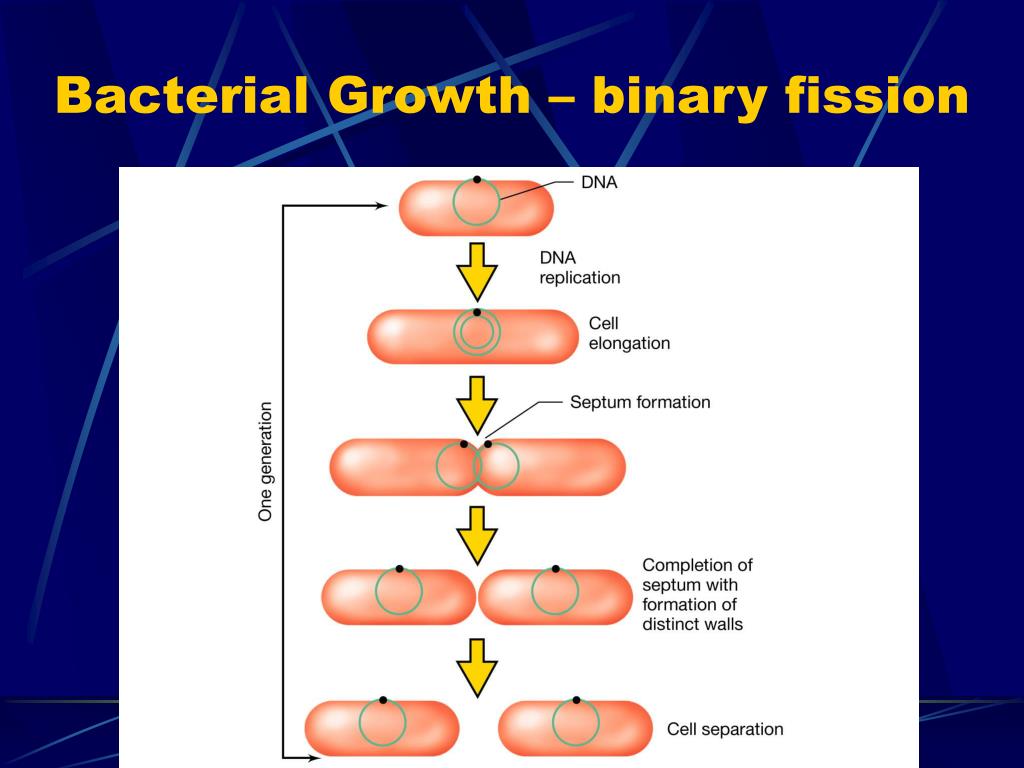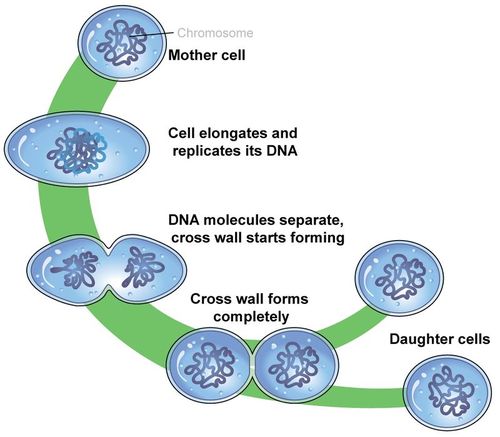
#Binary fission in bacteria how to
License: CC BY-SA: Attribution-ShareAlike This video covers:- How bacteria divide by binary fission- How to calculate bacterial population growth - The optimum conditions for bacterial growthMaths Pl. This short generation time, coupled with mechanisms of genetic recombination and high rates of mutation, result in the rapid evolution of prokaryotes, allowing them to respond to environmental changes (such as the introduction of an antibiotic) very rapidly.

Reproduction can be very rapid: a few minutes for some species. Bacteria replicate by binary fission, a process by which one bacterium splits into two. The DNA transferred can be in the form of a plasmid or as a hybrid, containing both plasmid and chromosomal DNA. In conjugation, DNA is transferred from one prokaryote to another by means of a pilus, which brings the organisms into contact with one another.

Archaea are not affected by bacteriophages, but instead have their own viruses that translocate genetic material from one individual to another. Transduction results in a recombinant organism. This was made possible not only by advances in microscopy that helped answer questions about cell biology but also by clever genetic. In transduction, bacteriophages, the viruses that infect bacteria, sometimes also move short pieces of chromosomal DNA from one bacterium to another. The last three decades have witnessed an explosion of discoveries about the mechanistic details of binary fission in model bacteria such as Escherichia coli, Bacillus subtilis, and Caulobacter crescentus. If a nonpathogenic bacterium takes up DNA for a toxin gene from a pathogen and incorporates the new DNA into its own chromosome, it, too, may become pathogenic. In transformation, the prokaryote takes in DNA found in its environment that is shed by other prokaryotes. In (c) conjugation, DNA is transferred from one cell to another via a mating bridge that connects the two cells after the pilus draws the two bacteria close enough to form the bridge. In (b) transduction, a bacteriophage injects DNA into the cell that contains a small fragment of DNA from a different prokaryote.

The DNA may remain separate as plasmid DNA or be incorporated into the host genome. In (a) transformation, the cell takes up prokaryotic DNA directly from the environment.
#Binary fission in bacteria plus
Plus some bacteria could be harmful (such as pathogens ) and would complicate the results of experiments when testing the efficiency of antibiotics or other anti-microbial compounds.\( \newcommand\): Modes of prokaryote reproduction: Besides binary fission, there are three other mechanisms by which prokaryotes can exchange DNA. If a specific bacterium is going to be cultured or grown, other contaminating bacteria would compete for nutrients in the broth or agar. Bacteria can be spread onto the plates, and allowed to form individual colonies of the specific bacterium. Following this, a replication bubble is formed, which separates the DNA strands. The process of replicating DNA begins from a replication origin. These must include: carbohydrates for energy, nitrogen for protein synthesis, plus other minerals.Īgar plates are created by pouring hot molten agar into sterile Petri dishes, which are then allowed to set. is found in a specialized region of the cell called the nucleoid.

Nutrient broth solution or culture medium, allows a liquid or gel to provide all the nutrients needed for bacteria to grow successfully. There are many ways to culture bacteria, and these include: We have learned how eukaryotic cells divide through mitosis or meiosis. This level of replication will depend on the availability of nutrients and other suitable conditions such as temperature. Binary Fission in Bacteria Binary Fission In Bacterial Cells. Bacterial growth in cultures Bacterial growthīacteria can replicate approximately every 20 minutes by binary fission, which is a simple form of cell division. coli, given a suitable environment for growth, divide and form a colony of hundreds of bacteria in.


 0 kommentar(er)
0 kommentar(er)
